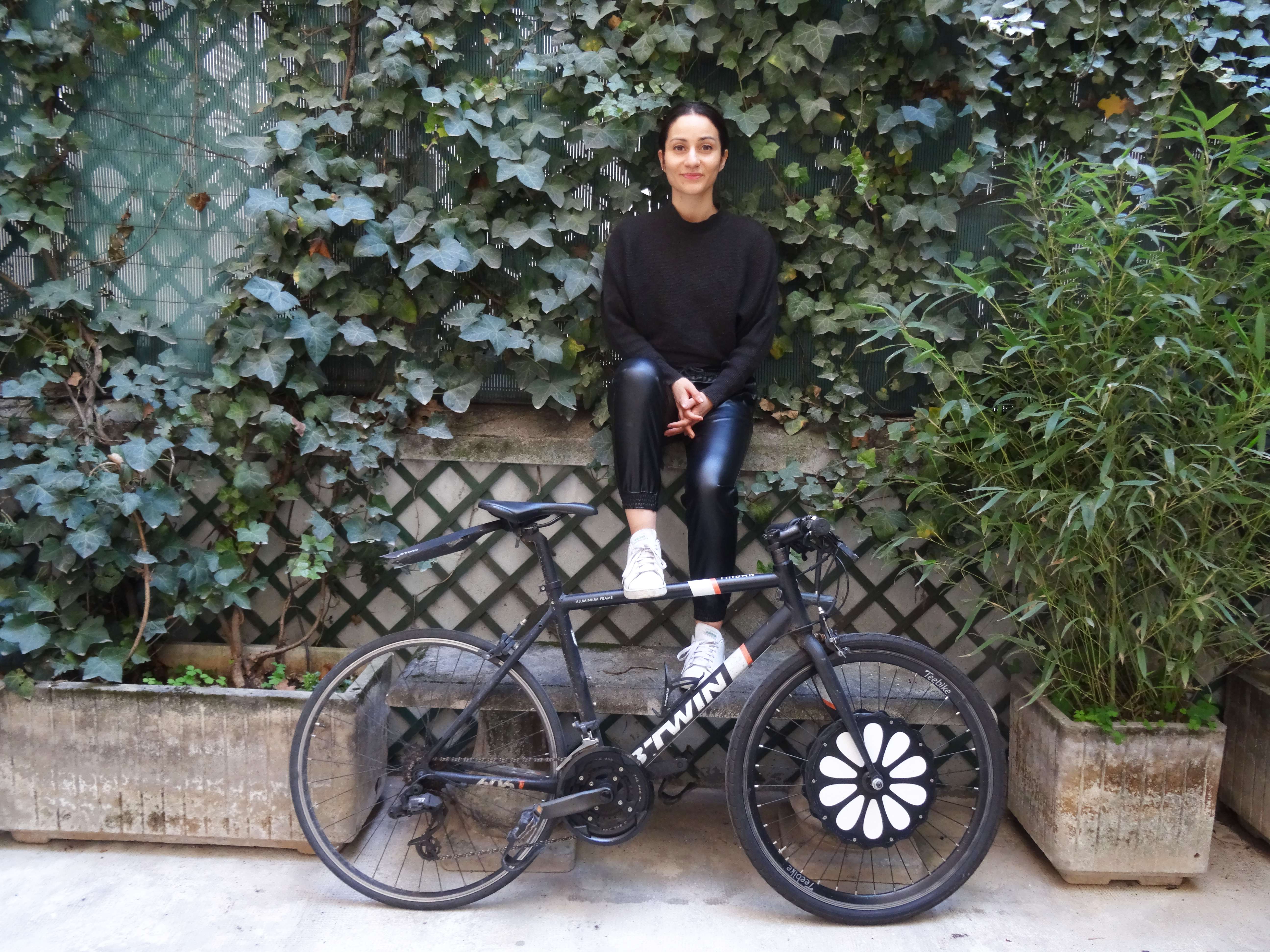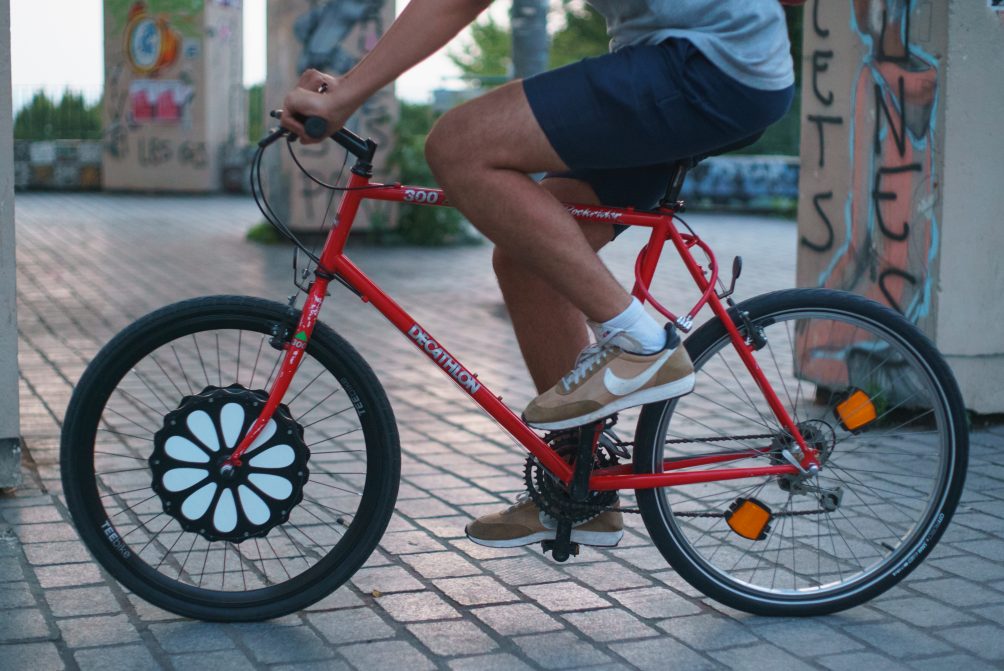
About Teebike
- Founders: Laurent Durrieu, Marine Billis
- Founded in: 2019
- Employees: 5
- Money raised: -
- Ultimate goal: See to it that bicycles are no longer thrown away for electric bikes.
The French company Teebike helps cyclists to upgrade their classic bicycle to an electric model in a user-friendly and sustainable way. Co-founder Marine Billis talks to us about it.

What does Teebike do exactly?
“Teebike sells a special electric front wheel that can be easily mounted onto bicycles to turn them into an electric bike. Using our free Teebike app, the wheel can be connected via Bluetooth. The user decides how powerful the electric supply should be. You only need the app to adjust the intensity. The wheel is designed by our co-founder Laurent, and is maufactured in China by a team that he has been working with for years. The wheel costs €795. That’s not cheap, but it’s less than half the price of a new electric bike. Moreover, you save on more materials. We offer the option of paying the amount in instalments for people who are unable to pay in one go. For the time being, we are active in France, Belgium and parts of Switzerland.”
Also interesting: Your next green car might be half a bike
Sounds complicated. Is it actually user-friendly?
“The reason we choose a front wheel instead of a rear wheel is that a front wheel is much easier to install. The tools required for the installation are supplied with the wheel. People who had never put a wheel on a bike before were able to do it within ten minutes. The powerful battery pack allows you to cycle on average about 60 kilometres per charge, and depending on how often you use the wheel, it will last for four or five years. After that, we will offer you the option of replacing the battery for €200. Then we take care of recycling the battery.”
Where did this idea come from?
“During in trip to China in 2015, Laurent saw enormous ‘bicycle cemeteries’. These are symbolic of a global problem. Bicycles are being discarded everywhere, often to make room for an electric bicycle, while bicycle parts can often last a very long time. He then started thinking about a way to ‘upgrade’ bicycles to electric models.”
What do you run up against in your work?
“The biggest stumbling block is the lack of awareness. A lot of people don’t realise that there is another alternative in between an old classic bike and a brand new electric one. To tackle this problem, we hope to have enough money in January, in the form of grants, to set up advertising campaigns.”
What are your dreams for the immediate future?
“The bicycle sector is a growing market. We want to be part of that growth by setting up new recycling and electrification workshops in new countries. We are focusing on countries where cycling is popular. That way we hope to train more employees and equip as many bikes as possible with our electric front wheel.”


